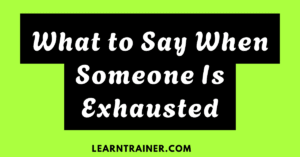Have you ever wondered what makes certain sentences sound smoother or more descriptive? Well, prepositional phrases are often the key. They’re an essential part of grammar that, when used correctly, can make your writing more precise, clear, and engaging.
So, what exactly is a prepositional phrase? In simple terms, it’s a group of words that starts with a preposition and includes a noun (or pronoun) that acts as the object of the preposition.
These phrases can express various kinds of relationships such as location, time, direction, manner, or reason between different parts of a sentence.
Think of prepositional phrases as the glue that ties elements of a sentence together. They can give your writing more context and detail, enriching your overall message.
In this post, I’m going to take you through 47 prepositional phrase examples, explain their usage, and offer practical advice on how to use them in your own writing.
Whether you’re writing a novel, an academic paper, or just improving your grammar, this guide will help you gain a solid understanding of prepositional phrases.
A Quick Overview of Prepositional Phrases
Before diving into examples, let’s take a closer look at the components that make up a prepositional phrase. Understanding these elements will make it easier for you to spot and use them effectively in your writing.
Components of a Prepositional Phrase:
- The Preposition: This is the first word in the phrase and sets the stage for the relationship. Examples of prepositions include words like “in,” “on,” “under,” “over,” and “with.”
- The Object of the Preposition: This is usually a noun or pronoun, the object that the preposition relates to. For instance, in “in the park,” “park” is the object of the preposition “in.”
- Modifiers: Sometimes, a prepositional phrase may include adjectives or other modifiers that further describe the object of the preposition.
Example: “The cat on the windowsill is mine.”
- Preposition: “on”
- Object of the Preposition: “windowsill”
- Modifiers (if any): “the” (modifies “windowsill”)
By understanding these components, you can better analyze and construct sentences using prepositional phrases.
Types of Prepositional Phrases with Examples
Prepositional phrases are incredibly versatile. They can describe a variety of relationships, such as time, location, manner, and cause. Let’s go through some of these different types, with multiple examples for each.
1. Prepositional Phrases of Location
These phrases describe where something is or happens.
- Example 1: “The keys are on the table.”
- Example 2: “She sat under the tree.”
- Example 3: “They live in New York City.”
Location prepositional phrases answer the question where?and are often used in both everyday conversation and descriptive writing.
2. Prepositional Phrases of Time
These phrases describe when something happens.
- Example 4: “The meeting will start at 9 AM.”
- Example 5: “He left after lunch.”
- Example 6: “We will return in the morning.”
Time-related prepositional phrases answer the question when?and can help provide clear temporal context to your sentences.
3. Prepositional Phrases of Manner
These phrases describe how something is done.
- Example 7: “She solved the puzzle with ease.”
- Example 8: “He danced with grace.”
- Example 9: “They argued in a calm manner.”
Manner prepositional phrases answer the question how?and are great for providing more detail on actions in your writing.
4. Prepositional Phrases of Direction
These phrases describe the direction in which something is moving.
- Example 10: “She walked towards the door.”
- Example 11: “He threw the ball across the field.”
- Example 12: “They headed to the park.”
These prepositional phrases answer the question where to?and are often used to describe movement or action.
5. Prepositional Phrases of Cause or Reason
These phrases give a reason or cause for something.
- Example 13: “She cried because of the movie.”
- Example 14: “He was punished for his behavior.”
- Example 15: “The event was canceled due to the weather.”
Phrases of cause or reason answer the question why?and can add depth to explanations or justifications in your writing.
47 Prepositional Phrase Examples in Context
Now that we’ve covered the different types of prepositional phrases, let’s look at a comprehensive table of 47 prepositional phrase examples from various contexts. I’ve broken these examples into three columns for clarity: the prepositional phrase, its function, and a brief example sentence.
| Prepositional Phrase | Type of Phrase | Example Sentence |
| on the table | Location | The book is on the table. |
| in the park | Location | We had a picnic in the park. |
| at the door | Location | She knocked at the door. |
| before dinner | Time | We’ll meet before dinner. |
| after the party | Time | He left after the party. |
| by tomorrow | Time | I need it finished by tomorrow. |
| with great effort | Manner | He completed the task with great effort. |
| in a hurry | Manner | She left in a hurry. |
| for fun | Manner | They went skiing for fun. |
| to the store | Direction | I’m going to the store. |
| into the house | Direction | She ran into the house. |
| across the street | Direction | We walked across the street. |
| because of the delay | Cause/Reason | The flight was delayed because of the delay. |
| due to the rain | Cause/Reason | The game was postponed due to the rain. |
| in order to succeed | Purpose | He studied hard in order to succeed. |
| on behalf of the team | Cause/Reason | She accepted the award on behalf of the team. |
| with a smile | Manner | He greeted everyone with a smile. |
| under the circumstances | Manner | They did well under the circumstances. |
| near the window | Location | He sat near the window. |
| for the first time | Time | She visited Paris for the first time. |
| at the last minute | Time | He arrived at the last minute. |
| during the meeting | Time | She arrived during the meeting. |
| without a doubt | Manner | He is without a doubt the best player. |
| in front of the house | Location | The car is parked in front of the house. |
| in the middle of the road | Location | The dog was in the middle of the road. |
| to the left of the door | Location | The table is to the left of the door. |
| on the weekend | Time | They always relax on the weekend. |
| in response to your letter | Cause/Reason | We are writing in response to your letter. |
| by accident | Cause/Reason | He broke the vase by accident. |
| for the sake of clarity | Purpose | I’m explaining this for the sake of clarity. |
| through the window | Direction | He saw the dog through the window. |
| over the rainbow | Location | The children played over the rainbow. |
| by the end of the week | Time | You must finish by the end of the week. |
| at the crack of dawn | Time | They left at the crack of dawn. |
| on top of the world | Manner | He felt on top of the world after winning. |
| in spite of the challenges | Manner | She succeeded in spite of the challenges. |
| with his help | Manner | She completed the task with his help. |
| under pressure | Manner | He performed well under pressure. |
| at the foot of the mountain | Location | The cabin was located at the foot of the mountain. |
| without any doubt | Manner | She was without any doubt the best singer. |
| in front of the mirror | Location | He stood in front of the mirror. |
| on account of his illness | Cause/Reason | The meeting was postponed on account of his illness. |
| in the wake of the storm | Cause/Reason | They had to rebuild in the wake of the storm. |
| with a sense of urgency | Manner | He spoke with a sense of urgency. |
Common Mistakes to Avoid
As you integrate prepositional phrases into your writing, here are some common pitfalls to watch out for:
Overusing Prepositional Phrases
While prepositional phrases are useful, using them too often can clutter your writing. Instead of stringing together multiple prepositional phrases in one sentence, try to reword the sentence to make it more concise.
- Incorrect: “The book on the table in the corner of the room with the torn cover is mine.”
- Corrected: “The book in the corner with the torn cover is mine.”
Confusing Prepositions with Other Parts of Speech
Some words can function as prepositions in some contexts and as other parts of speech in others. For instance, “after” can be a preposition (as in “after lunch”) or an adverb (as in “He arrived after”). Always be sure to check whether you’re using the word correctly as a preposition.
Placing Prepositional Phrases Too Far from the Noun
Prepositional phrases should be close to the noun or pronoun they modify. Putting them too far away can make the sentence confusing or awkward.
- Incorrect: “The book is on the table that is in the corner.”
- Corrected: “The book on the table in the corner is mine.”
Conclusion
Prepositional phrases are incredibly powerful tools in writing. They provide essential context, helping to describe location, time, manner, direction, and cause. By understanding and applying these phrases, you can make your writing more descriptive, clear, and engaging.
Remember, the key is to use prepositional phrases effectively—not too many, and always with purpose. Keep practicing, and soon you’ll be using them seamlessly in your own work.
- Prepositional phrases add depth and clarity to your writing.
- They can describe location, time, manner, direction, and cause.
- Watch out for overuse, misplaced phrases, and confusing prepositions.
Frequently Asked Questions (FAQs)
What is a prepositional phrase?
A prepositional phrase starts with a preposition and includes a noun or pronoun that acts as the object of the preposition. It provides additional detail about location, time, manner, etc.
How do I avoid using too many prepositional phrases?
Try to limit your use of prepositional phrases in a sentence. If you find yourself using several, see if you can restructure the sentence to convey the same message more concisely.
Can a prepositional phrase be more than two words?
Yes, prepositional phrases can be longer, especially when they include modifiers or adjectives. For example, “in the middle of the road” or “under the table with the broken leg.”

